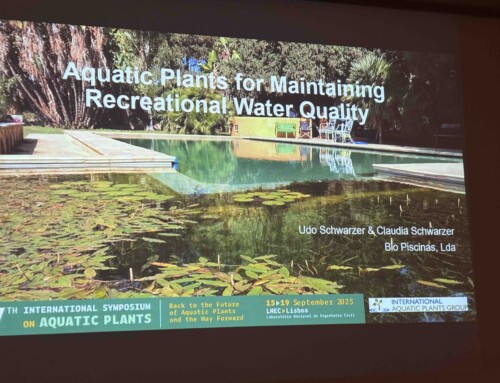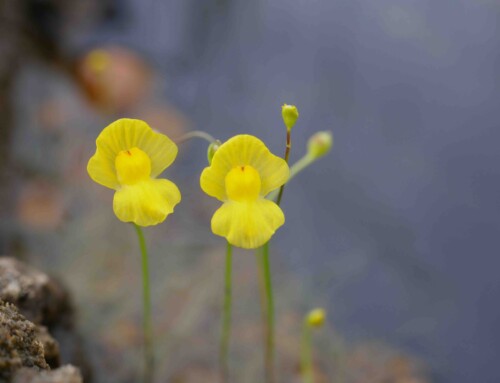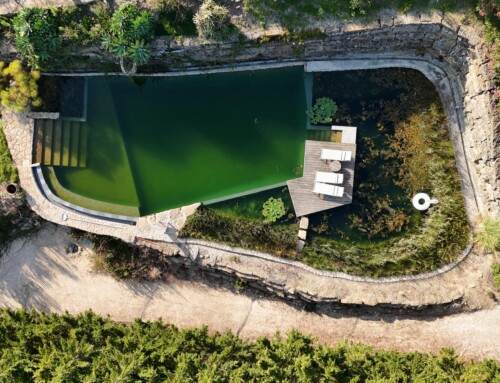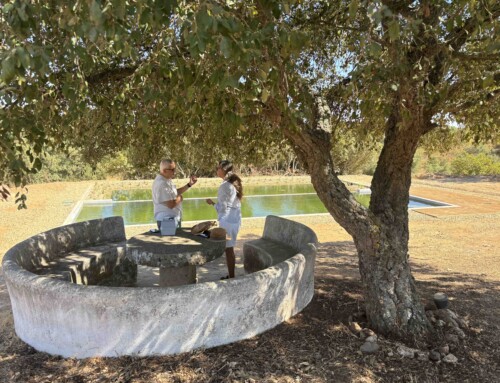Converting tanks into biological pools depends on several factors, such as size, depth, and other characteristics of the existing tank. For example, on a century-old farm in the north of the country, there was an old stone block tank. Its position, shape, and size allowed it to be incorporated into the design of a biological pool, which operates in two basins, separated by a low overflow.
The existing basin became a plant area because it is shallower and located at a slightly lower level. The new basin serves as a swimming area and is adjacent to the farm’s historic garden. Circulation through a submersible pump ensures water exchange between the two basins, and an external biofilter supports biological treatment.
A key element of the project, in addition to the existing tank, was the use of old stones. Once stored for new purposes, they became the rustic coping and finishing of the new basins. The patina of the old stones and basin contributed significantly to fitting the new organic pool naturally into the farm’s historic structure.
 What is a biological swimming pool?
What is a biological swimming pool?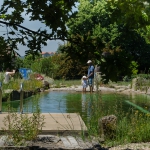 Important to know
Important to know Beyond the swim
Beyond the swim How to build
How to build Compare
Compare PB 22.000
PB 22.000 Biological swimming pools of Public use
Biological swimming pools of Public use Janguiscina
Janguiscina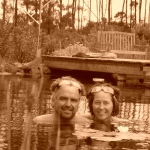 Who we are
Who we are Biological swimming pools
Biological swimming pools Landscape architecture
Landscape architecture ETAP
ETAP Solar Sauna
Solar Sauna Rewilding
Rewilding News
News Photo of the month
Photo of the month Gallery
Gallery Holidays with Swimming Pond
Holidays with Swimming Pond Testimonials
Testimonials Awards
Awards Biological swimming pools around the World
Biological swimming pools around the World Piscinas Biológicas® – Live
Piscinas Biológicas® – Live FAQs
FAQs Downloads
Downloads Shop
Shop



